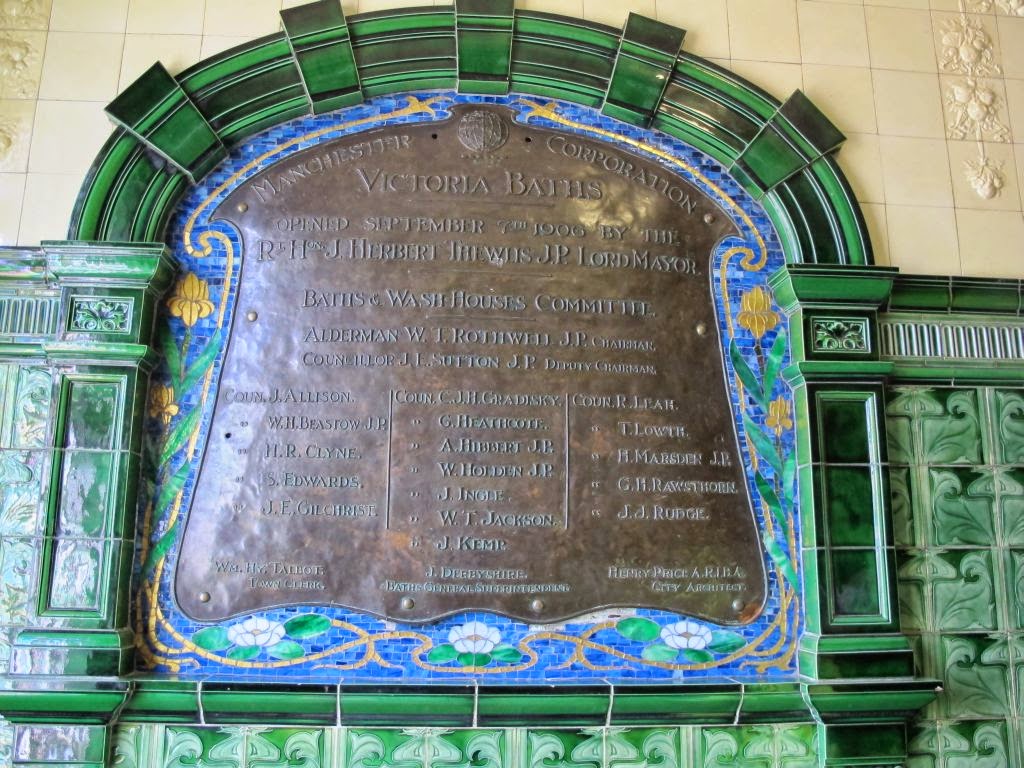As ever, please click on any picture for a larger image.
Up Kingsway to the city outskirts, on arrival we locked the bikes to each other and to the stanchion thrice over; us country folk don't trust the Big City! My C90 nearest the camera, then Malc's Townmate, and finally Ivan's SS50.
Malc and Ivan in front of the building. There are three entrances.
Surely this should be our entrance..... No,it was locked.
...As was this one
So just as in Ayr the other week, we had to use the Ladies.....
The baths opened in 1906, when civic pride of the City Council ensured they spent the princely sum of £59,000 pounds on the project. An absolute fortune at the time,and far more than a municipal baths building normally cost. Officially, the Victorian era ended in 1901 so these baths are Edwardian. However, the 'Victorian style' lasted well beyond 1901 and that's why these baths are known as 'The Victorian Baths'.
There were three pools related to the three entrances above. This is the Ladies' pool (mixed bathing was a no - no back then), with changing cubicles along the walls. The water was used first in the 'Males First Class' pool, then re-used after filtering in the 'Males Second Class' pool, and finally after further filtering, in the 'Female' pool.
Malc and Ivan have a donkey ride
Here's a closer look
The view from the shallow end
We took a 'behind the scenes tour'; here are the filters. They are full of sand and the water is pumped through to allow the detritus to be filtered out by the sand. When the filter is getting clogged, it is 'back flushed' (water sent through the other way) to ensure all the detritus is at the top, where it can be scraped off .
The water was heated by a pair of coal-fired Lancashire boilers. These were later replaced by this pair of more-compact oil-fired boilers. It was the failure of of one of these in 1993, and the lack of funds to repair it, that brought about the closure of the baths.
The boilerhouse chimney
At the back of the baths is the laundry
On top of the boiler house are two water tanks (one can be seen here) each capable of holding a pool-full of water. As the water was circulated from 'Male First' to 'Female' via 'Male Second' pools, it was held in one of these tanks.
This is the undercroft of one of the pools. The pool walls are three feet thick at the base, eighteen inches thick at the top.
A genuine 'Thomas Crapper' crapper! Contrary to popular belief, Crapper was not the inventor of the flushing toilet. That honour goes to John Harrington. "Just going for a Harrington" doesn't have quite the same ring though, does it?
There is a multitude of stained glass windows in the Baths, most depicting a sporting scene in line with the health benefits of bathing and Turkish Baths (also provided here). This one, however, shows a pleasant rural scene.
The rush hour was starting as we headed the little bikes homewards out of the hurly burly of the big city towards the rural delights of home. To wash the dust of the city from our throats we decided a pint at the Bird in Hand at Knolls Green, Mobberley sitting out in the hot sunshine would be nice.
So we called there. And it was!
.





























